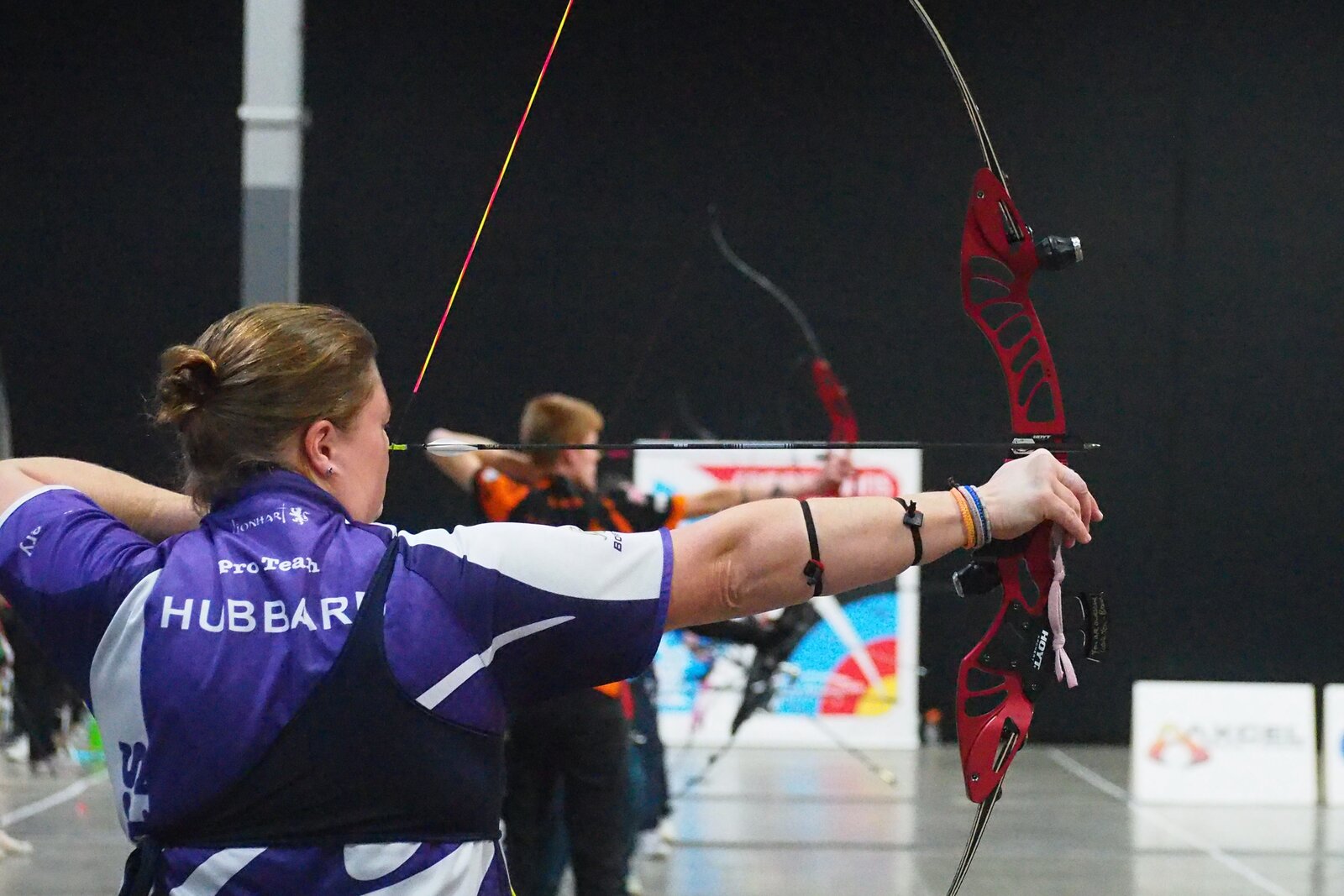In the dynamic world of archery, a significant and exhilarating trend is taking centre stage – the meteoric rise of barebow, a bowstyle that foregoes the use of sights or stabilisers. As we approach the halfway point of our 2023/24 indoor season, it's clear that the enthusiasm for this bowstyle has become a powerful force within the archery community. Let's delve into the insights shared by archers and enthusiasts, shedding light on the potential reasons behind this surge.

Marian Toomey, a member of Hingham Bowmen, reflects on the transformation over the past six or seven years: "When I first started, there were one or two women who shot barebow. And now there's loads, and it's amazing. It makes everybody better when there’s more competition."
Kim Doherty from Bowmen of Pendle and Samlesbury attributes the popularity of barebow to its recognition by World Archery: "A lot of people are now switching from other bowstyles to barebow, so they’re not necessarily new to archery, but making the move."
In January 2020, after a change to their rule books, World Archery began allowing barebow archers to claim records Indoors and Outdoors. Previously, barebow archers could only compete internationally in the World Archery Field Championships and World Archery 3D Championships until 2020, when the discipline was recognised for target archery and added as an official category for the Indoor Archery World Series.
Speaking at Archery GB's National Indoors, Vic Williams, Regional Development Officer for Wales and 3D and Field Development Officer, attributes the growth of barebow to its recognition by WA: "It's to do with the fact that World Archery now recognises it for Indoors, and there's always that potential for it to be recognised for Outdoors too. It'll be a big step for WA. It will make competitions massive, with barebow, compound and recurve at the internationals, but I think today, this weekend, shows how much barebows want to be involved.”
Helen Brown, also from Bowmen of Pendle and Samlesbury, highlights the accessibility of barebow archery since WA’s recognition: "Shooting 50 meters has made it so much more accessible to people."
Before the barebow boom, the community was quite small: everyone knew pretty much everybody, saw the same faces at competitions and learned about the bowstyle together. This closeness has created a community that is widely known for its friendliness and inclusivity, from supporting each other at shoots to stepping in and offering hard-won advice.
Helen explains: "I think for people who are swapping disciplines, they come to competitions maybe as a recurve, where they're maybe not excelling as much, but they see in the barebows a bit of a community and support."
.jpg)
Kim Doherty (left) and Helen Brown (right) at the 2022 National Tour Final
Steve Mitchell of Burton Joyce Archers agrees with Helen’s point about the enjoyable atmosphere amongst the barebow archers at shoots, saying, "Whenever you turn up to shoots, you can always guarantee that it's like shooting with a bunch of friends."
“We still struggle a little bit,” he continues, “with the fact that there's not a lot of coaches who know a lot about barebow, but the ones that do coach barebow do it very well, like Deb Horn who brings on athletes and puts them right through the top of our bit of the sport. But, certainly regionally, we don’t get much in the way of good barebow coaching. Instead, we’ve got a bunch of decent barebow archers who are happy to share their know-how to try and stop people from making all the mistakes we made along the way.”
Ian McCrae from Sleaford Maltsters sees the growth in skill sets: "Because barebow has grown so quickly in the UK, the skill set on how to shoot a barebow properly is becoming more and more common."
The spirit of camaraderie extends beyond the competitions, as Marian notes: "When you go to competitions, the barebow crowd is so supportive. They just shoot and have fun, rather than coming to win every time."
Sarah Hubbard (top image), women’s barebow National Tour Champion and National Indoor Champion, enjoys the freedom it offers: “It's more recognised, there's more spaces at shoots, and there's more encouragement for barebow archers. And I think a lot of it is the freedom and relaxation of it. A lot of people struggle with sights on their bows, and it gives them a bit of a break.”
.png)
Steve Mitchell shooting for at the National Indoor Championships in Stoneleigh, © Jonathon Yau
For a bowstyle that’s growing so quickly, where does it go from here? According to Ian, right to the top, with "The Olympics, of course!" Others have slightly more tempered thoughts.
Looking ahead, Sarah, who has signed a number of pro contracts since winning the National Tour, envisions major sponsorships and increased recognition for the value that barebow archers bring to the sport: “I think trying to get major sponsors is a crucial part of it. I'm doing some work with some good sponsors and trying to actually get more people to recognise the value of barebow archers. I think that's the starting point.”
Kim emphasises the supportive nature of the barebow community, predicting, "I think it's going to grow, and in a few years’ time, it’ll be on-par with the recurves."
"I'd love to see it in the World Champs," said Helen. "It's good that we're getting the GB barebow team in the Indoor competitions, and for Outdoors I'd love to see more of that."
With the fervour evident in these shared experiences, it's evident that barebow archery is not just a trend but a thriving community within the broader archery landscape. As more archers embrace the freedom, camaraderie, and unique challenges of barebow shooting, the movement is poised to shape the future of archery in the UK. Watch this space as the barebow community continues to grow and leave its mark on the archery scene.